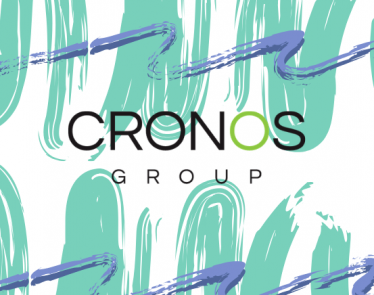
- CNS disorders are seeing renewed interest from investors, and epilepsy has seen a particular resurgence in investor activity as numerous public companies have found success with new drugs and mechanisms.
- A little-known company called NeuroOne Medical (NMTC) is making strides with an all-new thin-film electrode technology, which comes from the labs of the Mayo Clinic. This prestigious institute is also a 10% stockholder in newly public NMTC.
- This technology could transform diagnosis and treatment of some hard-to-treat epilepsies and movement disorders, and NMTC will file for their first FDA clearance in the second half of the year. For this $3 stock, 2018 and 2019 could bring rapid discovery, and with even conservative sales in the coming years it could be worth $10+.
NEW YORK, NY / ACCESSWIRE / July 25, 2018 / A little-known healthcare company is quietly working to upend decades-old diagnostic technology, and they're doing it with the backing of the esteemed Mayo Clinic as a 10% stock holder.
With technology pulled from The Mayo Clinic's own research facilities, NeuroOne Medical Technologies Corp. (NMTC) is pioneering a new thin-film electrode technology for use in Epilepsy, Parkinson's Disease, Essential Tremors and other brain related disorders.
This market is dominated by older, highly invasive electrode tech, and the opportunity for a new simpler and more efficient approach to recording brain activity - and possibly TREATING these disorders - could be immensely popular with neurologists.
The company plans to file their first approval application with the U.S. FDA in the second half of this year, with a FDA clearance possible by the end of 2018 and a salesforce on the ground in 2019. With this in sight, this $3 stock price may not last long, and $10 or more could be a realistic value in the coming years based on their initial market opportunity.
Neurology Seeing Renewed Investor Interest, And Epilepsy Leading The Way
Disorders of the Central Nervous System (CNS) are known for being some of the most difficult to tackle. It doesn't help that the brain remains one of the least understood organs in the human body, and it's easy to manifest side effects when you have drugs crossing into this highly protected part of the body.
But CNS has seen a resurgence in investor interest lately, especially in epilepsy, where a number of companies are making real headway - and investors are doing well.
Zogenix Inc.'s (ZGNX) ZN008 has been through two successful Phase III studies in one kind of epilepsy during the last 12 months, propelling the stock from $12 to $63 at its peak.
Meanwhile, marijuana or cannabis-based drugs are also seeing substantial interest from Wall Street specifically for their epilepsy potential, with GW Pharma (GWPH) as a standout; their first drug, called Epidiolex was just approved by the U.S. FDA for rare treatment-resistant epilepsy's and GWPH shares have climbed from $10 to $150 in 5 years. Zynerba Pharmaceuticals (NASDAQ: ZYNE) and Cara Therapeutics (NASDAQ: CARA) are making progress with similar mechanisms as well.
Even though most of these companies are initially going after highly treatment resistant epilepsy patients first, this is a huge market opportunity. About 3 million people in the U.S. have epilepsy, and only 50% of these will be treated successfully with a single drug. Another 30% or so will find success with multiple drugs, which could include these new therapies, like Epidiolex.
For Patients Not Helped By Drugs, Current Options Are Terrible
Sadly, another estimated 20-30% of patients will not find relief from drugs. In these cases, doctors may consider a surgical resection, where they actually remove a part of the brain where seizures are happening. Surgical resection can actually be curative for about half of the people in which it's attempted.
But about one-third of epilepsy patients will not respond to well-tested traditional drug treatments. In this case, doctors may attempt what's called a resective surgery, where they remove the part of the brain where seizures are happening or being initiated.
Identifying the offending brain tissue (called the epileptogenic zone) is a difficult task, and doctors use electroencephalography (EEG) to record the electrical activity of the brain through electrodes placed acrossed the patient's scalp or directly on the brain during a surgery. Once the electrodes are in place, a patient waits for one or more epileptic seizures to occur in order to measure brain activity and also identify the epileptogenic region. Only then, with precise and repeated measurement, can resective surgery be planned.
Nevertheless, only about 16,000 intracranial EEGs are performed annually in the U.S., despite as many as 1 million patients not responding to drug treatment, and hundreds of thousands of patients eligible for resection!
The problem?
Identifying the right brain tissue to cut out is long, slow, painful, and expensive - patients just don't want to do it. Using EEGs can involve a highly invasive and sometimes dangerous craniotomy (cutting open the skull), exposing the brain to possible infection, not to mention a tremendous open-skull surgery! Sometimes the patient stays in the hospital for weeks, hooked up to cables coming through their skull while off of their normal epilepsy medications, meaning they have more seizures.
It's painful, burdensome, and costly for patients and the healthcare system. And, that's only the first step before yet another hospital stay for the actual resection.
NueroOne's Tech Could Solve and Simplify The Resection Dillemma
Neurologists want better options. A shorter, simpler diagnostic process would significantly increase the number of eligible patients who undergo the resection process, and it could result in more patients being cured of their epileptic seizures.
NeuroOne is developing a proprietary thin-film electrode technology with a more brain-friendly material that can reduce inflammation and improve electrical signal clarity for better diagnosis. The technology came from The Mayo Clinic, which is also a 10% stockholder in the company - they've made a bet on their own technology, letting NMTC handle the development process.
The tech offers high-resolution EEG recording to increase the accuracy of diagnostics, improving resection planning and outcomes. This is like comparing the high-definition television displays of today to older tube technology of the 70's.
The tech also utilizes disposable, sterile cables, saving EEG techs time and extensive costs related to cable management, which is part of the process today. And most importantly to many patients, the technology may even be placed in the skull through non-invasive methods, without the need for a craniotomy.
Their first two planned products are a cortical electrode, for use on the brain, and a depth electrode, for use deeper in the brain tissue. NMTC is guiding to file their first FDA approval application later this year, and once FDA cleared, they could have a salesforce selling in the U.S. early in 2019.
What's It Worth?
NeuroOne's technology could transform the diagnostic and treatment process for the nearly 1 million epilepsy patients in the US, and millions more globally, who do not respond to drug treatment. Combined, cortical and depth EEGs - the company's first two targets - are an estimated $112 million market opportunity in the U.S., based on 16,000 procedures yearly a $7,000 to $10,000 per-patient cost. This is the tip of the iceberg, as this number is low specifically because docs aren't thrilled to try it. A better device, like their own, could dramatically increase the number of uses. 100,000 uses annually isn't out of the question, for a TAM of $700 million.
NeuroOne is new to the public markets and will need to access capital to further their business. That's a risk to an investment in the stock, and NMTC, as a micro-cap, could fail to execute properly. As with most micro-caps, this is a high-reward and high-risk opportunity that could be worth nothing, and investors should be aware of the substantial headwinds facing the company, including medical device competition from larger companies.
The company is also developing a combination diagnostic/therapeutic, combining the company's proprietary depth electrode with an ablation technology to immediately destroy the offending tissue at the site. This single-stage procedure could revolutionize the resection diagnosis and surgery process further, taking it from a 2-3 month process to a 1-week or shorter and substantially opening up the number of eligible patients opting for treatment.
Medical device companies with approved products are attractive to healthcare investors, and even a few million in sales could be big for little NMTC. Price/Sales multiples for public, small medical device companies are in the 3-5X range, and NYU Stern cites an average multiple of 4.35X for healthcare products.
This is why $15-30 million in revenue for NMTC - which would be about 15-25% of the current market ONLY - in the coming years after their first approved device could rapidly justify a higher valuation for NMTC, of up to $150 million in market capitalization. For NMTC shares, that would be over $12 per share. That's not considering the upside as the market expands due to ease-of-use, nor the opportunity for their planned diagnostic/ablation device in the coming years.
Investors have yet to realize the upside potential in this new medical device stock. A near-term FDA filing could put it on traders' radars, and NMTC could see its first big move since going public in the coming months.
About One Equity Stocks
One Equity Stocks is a provider of research on publicly traded emerging growth companies. Our team is comprised of financial professionals that strive to find the companies and management teams that will outperform the market and deliver investment returns to our subscribers. We are not a licensed broker-dealer and do not publish investment advice and remind readers that investing involves considerable risk. One Equity Stocks encourages all readers to carefully review the SEC filings of any issuers we cover and consult with an investment professional before making any investment decisions. One Equity Stocks is a for-profit business and is usually compensated for coverage of issuers we cover as well as other advisory work we perform. In the case of NMTC, we are reimbursed for actual costs we incur and anticipate receiving up to 250,000 shares of restricted stock from NMTC for Business Development, Capital Markets, and Research Services. Please contact us at [email protected] for additional information or to subscribe to our intelligence service.
SOURCE: One Equity Stocks, LLC









